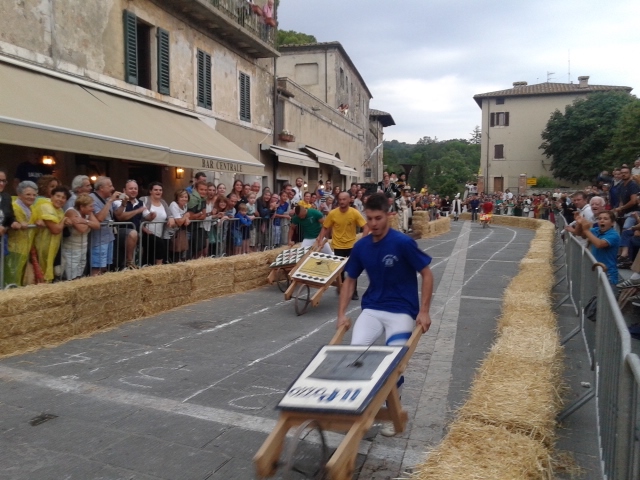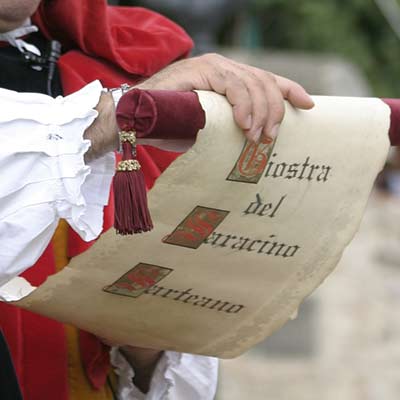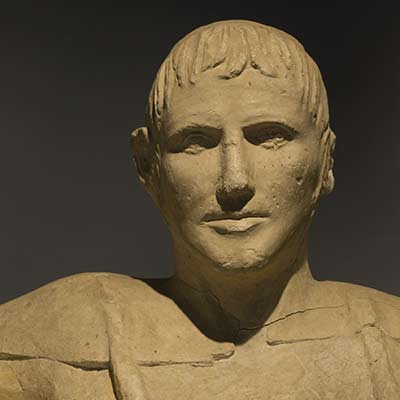
San Casciano saw tied its urban and social transformations in the different stages that have characterized the development of spa resorts in Italy. The testimonies, during the Renaissance, the discovery of numerous remains of villas and temples (floors, columns, statues, etc.) Of the Roman imperial period in large areas, located near the church of Santa Maria della Colonna and the Great Bath, make assume a significant urban expansion of San Casciano in the classical age.
The crisis of the spa of the High Middle Ages, attributed to various causes ranging from the economic crisis, the difficulty of movements and especially the condemnation of worldly practices of Christianity and dissolute that characterized life at the Spa in Roman times, caused a drastic reduction planning demographic of San Casciano. Were abandoned settlements outside the city walls and 700 families mentioned on an ancient document found by Schiavetti in the sixteenth century, it will remain just a memory. When in 1559 is the only written "Lira" (list of real estate owned by private citizens) come to us, we note that the only inhabited area that is enclosed within the walls, with some exceptions near the Bathroom Ficoncella. The town surrounded by walls is divided into two "lands": Castle and Borgo, respectively located in the east and in the west. The names of the two parties suggest a gradual expansion of this area to the detriment of the progressive abandonment of the spa. In the two "lands" are space, from the end of the fifteenth century, the two companies lay: Castle in the Society of St. Anthony, in the village of SS.ma Conception, both with their own churches and administrative bodies. Already in the same Lira 1559 lists the names of Pozzo and Porticciola reflecting a topographic reference commonly accepted.
In the following centuries you lose the use of place names of the Castle and village to identify the various parts of the town, while taking an increasingly important reference more limited as Campanile, Gattineto, Porticciola and Pozzo.
In 1995 the Youth Association has proposed to organize a national of the four districts: Campanile, Gattineto, Porticciola and Pozzo, establishing boundaries and promoting the establishment of statutes which regulate the organizational structure. They were finally set the rules for the conduct of the games between the contrade, in order to rediscover the festive atmosphere that characterized the seasons of "wetting" in the XVI-XVIII for the pleasure of the many "bagnaioli" who came to be cured with our thermal waters.
Thus it was born the Palio of San Cassiano. The festival is held on the Sunday before the feast of St. Cassian (August 13), the patron saint of San Casciano. The event begins with the formation of a procession, composed of representatives of the districts (captains, drummers, armed, players, ladies and gentlemen), all in Renaissance costumes, which, along a stretch of road that connects to San Casciano Terme, He arrives at the gate to the country and here receives, from the Grand Chamberlain of the Magistrate, permission to enter inside the walls. When he reached the square in front of the Collegiate of San Leonardo, the procession stops and the Magistrate here collects the oath of the Captains of the Contrade, while the Archpriest blesses the Palio. Thus began the visit of the procession to the contrade, each of which the Magistrate will light a torch as a signal the start of the games.
During this day the country is decked with flags and adorned with typical tools of San Casciano dei Bagni. The district of the bell tower with the colors green and white as a symbol for the bell tower of the church of San Leonardo, the day of the Palio in the beautiful Republic Square commemorates the market for cloth and organizes the sack race. The district of Porticciola with the colors yellow and red emblem and as the old port of the village is the old job of vincaiolo and organizes the game of piñata. The district of Pozzo in the colors blue and white crest well that you will find the center of the square of the district is the old blacksmith's work and organizes the game's tumble. The district of Gattineto with yellow and black colors and emblem as the staircase with a cat door in the heart of the district is the work of the old wool spinning and organizes the game of maypole. The Sunday before giving away the lands bordering its borders with their flag and begins the wait, you can already see that all the contrade are in turmoil. Arrived the day of the Palio the country is decorated with care, giving the impression of a Renaissance village, at 16.30 all of the districts listed can be found inside the castle to form the parade. The parade consists of drummers, guards, judges, banners, ladies, knights and challengers well aligned and compound towards the ancient port of the country in Via San Cassiano where the spokesperson of the Magistrate hands in the name of, a greeting to all the districts and the authorization to enter into the village walls. At this point, the procession towards the church of San Leonardo, where the parish priest will perform the blessing of the Palio and the Magistrate will make oath to the captains. The Magistrate will light a torch in each district meaning that the challenge can begin. The first challenge is "sack race", the second "the piñata", the third "the tumble" and finally "the greasy pole." Each game awards to the winner four points in second three points to two points and the third to the fourth point, the district that at the end of these games is on the first place will receive an acknowledgment dal'organizzazione and will start from the line in the " TRAVEL FROG "while others will have a penalty just shifting the starting point in relation to the marks obtained in the four games.
The race with the frogs is the main game as it determines the actual winner of the Palio, is pushing a wheelbarrow up on arrival, with the particularity that the plan is put a frog that must remain in place all the way. If the animal jumps out of the plane of the wheelbarrow, the competitor must stop and catch the frog, just put it back on when the wheelbarrow can share.
Of course the frog must reach the finish line in perfect physical condition, under penalty of disqualification of the Contrada.
The competitor who arrives first at the finish line in compliance with all regulations will be the winner of the Palio.
But in the end the country will be celebrating because the purpose of this event is to unite all in fun.





